
It allows to keep PV going, with more focus towards AI, but keeping be one of the few truly independent places.
-
gh3pilot First off, nice footage! As far as "best straight out of camera profile" it's hard to say simply because the answer is subjective. That comes down to personal preference IMHO. The one thing I can attest to is the -5 settings across the board. I've found that this is an accepted truth to shooting and grading regardless of what camera you use. Personally I shoot with Natural with all at -5. I use natural because (before setting all to -5) I point the camera at a scene and quickly run though all the presets. Natural has the least amount of contrast and saturation than any of the other settings. Then I take everything to -5 to flatten out the contrast and saturation even more. This gives me the most dynamic range to work with in post. The flatter the footage the more I'm able to really push and pull the color and contrast in post. See attached.... This footage was shot in my studio where the walls are warm yellow and I'm using tungsten lights (adding even more warmth). Makes getting a good white balance tough. As you can see the footage straight from the camera is still way Red/Yellow even with the white balance set to 3700K and saturation at -5. But because the footage is shot so flat (-5 -5 -5 0) I had much more "wiggle room" to get the graded/color corrected image below it. The good news to me is that the GH3 can capture the information. The blues are there... just need a little TLC and they'll reveal themselves.
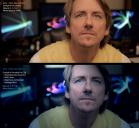
 Screen Shot 2013-10-20 at 12.35.02 AM.jpg1751 x 1618 - 1M
Screen Shot 2013-10-20 at 12.35.02 AM.jpg1751 x 1618 - 1M -
@gh3pilot You are correct that the GH2 provides a sharper image. I did some side-by-side comparisons a few pages back on this thread.
I've been shooting Standard all 0's. I found that's the easiest way to match the GH3 and GH2 image. I use a color chart and Resolve to get the two in line. Then I save out the 3D lut and import into FCP X using LUTutility. Even then I have to tweak a little more with the color board.
Regarding the sharpness, I've tried a few things, from iResolution on high to sharpness all the way up. I think the sampling from the sensor is just different. When comparing directly to the GH2 image, yep, it's softer. But when you look at the GH3 image on it's own - not comparing - it holds its own.
-
This is the first thing I have filmed with the GH3. Lens is Oly 12mm f2. Filmed at 50Mbps IPB, 60p, with Natural -5's after grading I'm pretty happy with the look but it still feels like it could be sharper, and I have seen a few videos where vivid looks pretty good. Can anyone offer insight as to what the best straight out of camera profile is? Is natural with -5 across the board the best setting for grading this type of scene? Does this footage look sharp for the GH3? My GH2 seems a bit sharper.
Thank you!
-
I just discovered a reason for shooting with saturation -3 or better -4 in good light. Looks like the only way to balance greens with reds in post, otherwise, when shooting with saturation close to 0 reds are always on top in a fake way. Am I right??
-
shot with gh3 'scenery' all dialed down to -5 before and after color correction in Filmconvert.
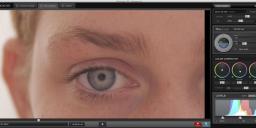
 Schermafbeelding-2013-11-23-om-00.41.29.jpg2543 x 1174 - 240K
Schermafbeelding-2013-11-23-om-00.41.29.jpg2543 x 1174 - 240K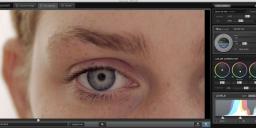
 Schermafbeelding-2013-11-23-om-00.18.38.jpg2545 x 1172 - 299K
Schermafbeelding-2013-11-23-om-00.18.38.jpg2545 x 1172 - 299K -
Here's some shot of a LUT I made myself with Motion for FCPX when I'm shooting Neutral 0 contrast. I recover just enough details il the dark areas look at the guy's hair. While getting more contrast in the neutral areas, (which I think is the biggest problem with the GH3)
And it removes the GH3 magenta cast.
A = without de "LUT" B = with the "LUT"
By getting more contrasty mid tones, you get the impression of better resolution too, I feel that the GH3 matches the GH2 now.
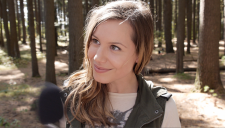
 2A.png1395 x 793 - 2M
2A.png1395 x 793 - 2M
 2B.png1395 x 793 - 2M
2B.png1395 x 793 - 2M
 B.png1409 x 792 - 2M
B.png1409 x 792 - 2M
 A.png1408 x 792 - 2M
A.png1408 x 792 - 2M -
@yak the key is to make sure both or either (if just shooting one) the gh2 and 3 have been white balanced on the same source gray card. If you can, test it outdoors during the day or in tungsten light. If white balanced beforehand, you won't see much of a difference on the gh3 as it is just straightening out the primary and secondary hues.
My current feeling on this is that skin tones look good but the color hits all the yellow spectrum. So anything yellow goes toward orange. When I get back, I want to see if I can thin it out to just skin tones, which might be difficult to achieve on a global setting.
Also, I'm sure different lenses will provide different results. My hope is that a global hue change can compensate for that. If shooting a person, after applying the lut just try to line up the skin tones around the skin line.
-
Very Nice @5thwall I'll give it a try.
Here is a video I made with 0,0,-5,-5. and an old minolta lens. This is my go to config with these lens. And I really think you loose less DR with contrast set to 0.
-
Ok, I was having too much fun. LUT Utility works great. Wow. Here was a test under different lighting conditions (top light fluorescents, around 5600K, I think). Cameras were balanced off the same gray card. They were very different beforehand. LUT applied to each clip and then a slight hue change added to the GH3 clip.
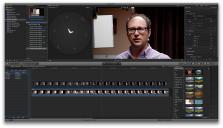
 GH2 with LUT applied.jpg2668 x 1528 - 424K
GH2 with LUT applied.jpg2668 x 1528 - 424K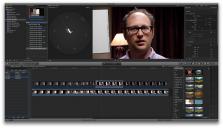
 GH3 with LUT and Hue applied.jpg2668 x 1528 - 412K
GH3 with LUT and Hue applied.jpg2668 x 1528 - 412K -
One additional note on that last test. In Resolve, I shifted the yellow hue curve up to what I would consider the "wrong" territory, just balancing by eye to math the GH2 to the GH3 skin tones. I was able to get skin tones remarkably accurate when compared to the GH3. Since it was just my face and a black background, I'd need to test this a little further to see if I can get an overall "LUT" or grade, I guess, to match GH2 to 3.
If something like this worked, then I could make a LUT in Resolve and import it into FCP X with Denver Riddle's LUT Utility. Again, much more testing on this.
I've attached the GH3 and GH2 LUTs. These were made in white-balanced 5200k conditions. You can download the LUT Utility demo for free. Test it out and see if it works for you all.
Initial tests under different lighting conditions don't yield the same balance. But cool, nonetheless. A very easy way to use Resolve while editing and throw those looks back into your NLE.
Happy I got this far with it, but now it's time for a 2-day vacay! Talk to you guys when I get back.
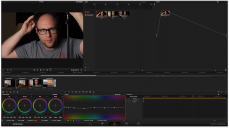
 GH3 balanced for OneShot chart.png2588 x 1447 - 1M
GH3 balanced for OneShot chart.png2588 x 1447 - 1M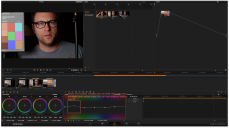
 GH2 balanced for GH3.png2588 x 1447 - 1M
GH2 balanced for GH3.png2588 x 1447 - 1M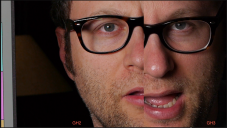
 GH2 vs GH3.png1317 x 742 - 1M
GH2 vs GH3.png1317 x 742 - 1M
 GH2+GH3_LUTS.zip566K
GH2+GH3_LUTS.zip566K -
@SuperSet No. Much of these are observations and need to be tested. My knowledge of resolve is minimal and my tests have just begun to scratch the surface. Right now, I'm just trying to find the best overall look for skin.
In a test I just performed with both cameras using the same lens, both set to all 0's, the GH2 looked far more yellow on the skin tones even after balancing. The GH3 had a rosier, more magenta cast.
Wish I really knew a lot more than I do. So a lot is trial and error.
I can confirm that Vibrant -4, 0, -2, 0 is the most accurate of the settings based on my tests.
-
-
@SuperSet Once I get my second Ikan monitor back from them with the updated firmware, then I can see what's going on with both cameras live. Hopefully in a couple weeks!
-
@5thwall Great post! Thanks for taking the time to do it. Looking forward to reading about more of your findings. Currently running Natural -5, -5, 0, -5 but am open to running something better for grading and skin tones.
-
Hi all - I've been doing extensive tests with the GH2, GH3 and the DSC OneShot chart. It has Rec.709 colors, skin tones, black, gray, and white on the front. Nice chart. Been trying to figure out the sweet spot on the GH3.
I've also been using a firmware-updated Ikan D5w with built-in waveform monitor and vectorscope. I've been very interested to see exactly what the changes are in the different profiles. It's been quite a learning experience.
I brought all the footage into FCP X to double-check the scopes in there. I also have a calibrated Videotek TM-621 It can zoom in on the colors 2x, which is necessary to balance to "perfect" Rec.709 colors. Reason for this is that the chart prints the primary and secondaries at 50% of full saturation.
I was testing with both the 12-35 and the 35-100 Panny lens. There is some additional vignetting on the 35-100, but I would balance colors toward the center of the frame on both lenses.
My method was to shoot the chart with both cams, then shoot some footage with a face in it. My own face seemed to work just fine for this test, although it looks like I'm not yet "professionally calibrated." Perhaps a trip to the dermatologist will help with that ;-).
In addition, I would then bring footage into Resolve 10 and do some basic Hue vs Hue fixes to see how much correction needed to be made. I don't know Resolve 10 very well but this seemed like the way to go about it based on Art Adams' original explanation on Pro Video Coalition when he was using Color.
The goals here were two-fold:
A. Figure out a best-case mode for skintones, since I find them to be generally flat on the GH3. B. Try to find the best modes between the GH2 and GH3 for matching.
Sorry, no pictures of scopes and such. This has taken a bit of time and I was focused on the work and not so much on documenting it with screengrabs.
Here are my initial findings - one of which was a big "duh" moment for me ;-P.
Vivid -4, 0, -2, 0 seems to be the most accurate in terms of how the colors are lined up with their vectors on the vectorscope. It also lined up the contrast on the chart most accurately. White at 90%, Gray at 50%, and Black at 7.5%. In addition, it also gives an extra boost to Green, Magenta, and Cyan, which are generally lacking in the other modes.
Accuracy does not necessarily mean "most favorable." And all the testing in the world doesn't reproduce real world conditions where lots of happy accidents occur. Shooting on vivid yielded more yellow skin tones. Standard yielded more magenta/red. Both could be balanced out to match in Resolve.
Currently, I prefer the skin tones the best on Standard 0,0,0,0 (not the "duh" moment!). This was a bit of a surprise since I thought Vivid would be better. My reason for this is that there seems to be more contrast in the mid-tones without taking too much into black, when set to standard. Faces were a little more plastic-y in Vivid.
While I was able to manually balance to my flolights (rated for 5400k, but actually closer to 5200k according to the camera), I found that auto balancing the GH3 off of a gray card (not white) produced more favorable and accurate results.
If you want to balance a GH2 and a GH3 together, again the gray card is the way to go. Line them up and balance off the same light source if at all possible. I was able to get the cameras pretty close. Yeah, that was the "duh" moment that occurred after WAY too much testing :-D. I'm just using both cameras on Standard, currently. More testing needs to be done here to see how close I can get them before balancing in post.
The GH3 on it's own looks great. But whenever I compare the image to the GH2, I almost always prefer it. More testing necessary here though to see if I can really get the GH3 closer to the look of the GH2.
There is very little room, in my opinion, for color balancing or correction on the GH3. You really need to nail the white balance on set if skin tones are involve. Highly recommended for interviews.
On the GH3, the Green, Cyan, and Magenta were a bit shallow on the vectorscope. Adding saturation to them did not noticeably or dramatically affect skin tones, although some slight changes could be perceived. Outdoor testing might prove otherwise.
On the GH2, the midtones seem to be a bit more contrasty and bit more blue. This is an unscientific assessment. More testing here.
I still plan on doing some more testing to try out a few more odds and ends, but I feel like I'm armed with what I need to know for some field shooting.
-
20mm is great for its price. I am hoping soon for a sigma 18-35 with speedbooster, no vignette in gh3 videos.
-
@maddog15 The sound for me is the easiest part in reality, I was able to get it organised with a motu soundcard and record flat channels remaking the loops then digitally and correct anything, but as I wrote, next time will be only the way I say in both sound and video :)
-
@starios Very cool. The sound was good. Unfortunately audio is the often overlooked essential other half of "video". (Side Note: Had one of the repeated percussive taps not been off tempo it would have been easier to listen to. But that's not you. That's the musician.) Regardless great job on your part in my humble opinion. Even with it's weaknesses I think the 20mm is a good lens. I just bought the Leica DG Summilux 25mm f1.4. I'm anxious to give it a real try in low light. Anyway great work and thanks for posting.
-
My footage was poor, we managed to shoot in 2 hours one main shot that I used crops and about one shot closeups, in a very small room, pancake 20mm to its limits. The sound is live from static shot, one mic to amplifier and gh3's microphones. About 50watt light :P natural -5, -5, -1, -5, iso 800, ss25, f/1.7 This is my first music clip, next time it will be better because we will do ONLY what I say. I wish I had one more shot closeups :(
-
there is in the java remote control through browser, based on lumix link, there is information about those kind of settings, the camera knows what is happening to it every time, hopefully it would not be that difficult for them
-
"@larrysanders and @wgtwo When we've been mentioning "metadata" that's probably the wrong term we're using. We're saying how convenient it would be to be able to look at all the information in a clip as it pertains to the GH3 specifically. So not just your typical "metadata", but.....
eg: Clip 1080 24p, 50Mb/s, Color Profile: Standard, Contrast -5, Saturation -3, Sharpness -1, Noise Reduction -2, White Balance: 3700K, Lens: Summilux Leica 25mm, f1.4, SS: 60, OIS: On....etc. etc.
That kind of data."
Yes, exactly. That sort of info on a text file with the same file name as the clip would be very handy. I'm sure it would not be that difficult for them to do.
-
got it misread - agreed would love those details
-
@larrysanders and @wgtwo When we've been mentioning "metadata" that's probably the wrong term we're using. We're saying how convenient it would be to be able to look at all the information in a clip as it pertains to the GH3 specifically. So not just your typical "metadata", but.....
eg: Clip 1080 24p, 50Mb/s, Color Profile: Standard, Contrast -5, Saturation -3, Sharpness -1, Noise Reduction -2, White Balance: 3700K, Lens: Summilux Leica 25mm, f1.4, SS: 60, OIS: On....etc. etc.
That kind of data.
-
What? MediaInfo gets you codec information. This is not metadata, and is the same for every clip.
-
I dont know that it does exactly what you need, but I've found using a free program called 'MediaInfo' extremely helpful in recovering certain metadata from video files.
Howdy, Stranger!
It looks like you're new here. If you want to get involved, click one of these buttons!
Categories
- Topics List23,990
- Blog5,725
- General and News1,353
- Hacks and Patches1,153
- ↳ Top Settings33
- ↳ Beginners256
- ↳ Archives402
- ↳ Hacks News and Development56
- Cameras2,366
- ↳ Panasonic995
- ↳ Canon118
- ↳ Sony156
- ↳ Nikon96
- ↳ Pentax and Samsung70
- ↳ Olympus and Fujifilm100
- ↳ Compacts and Camcorders300
- ↳ Smartphones for video97
- ↳ Pro Video Cameras191
- ↳ BlackMagic and other raw cameras116
- Skill1,960
- ↳ Business and distribution66
- ↳ Preparation, scripts and legal38
- ↳ Art149
- ↳ Import, Convert, Exporting291
- ↳ Editors191
- ↳ Effects and stunts115
- ↳ Color grading197
- ↳ Sound and Music280
- ↳ Lighting96
- ↳ Software and storage tips266
- Gear5,420
- ↳ Filters, Adapters, Matte boxes344
- ↳ Lenses1,582
- ↳ Follow focus and gears93
- ↳ Sound499
- ↳ Lighting gear314
- ↳ Camera movement230
- ↳ Gimbals and copters302
- ↳ Rigs and related stuff273
- ↳ Power solutions83
- ↳ Monitors and viewfinders340
- ↳ Tripods and fluid heads139
- ↳ Storage286
- ↳ Computers and studio gear560
- ↳ VR and 3D248
- Showcase1,859
- Marketplace2,834
- Offtopic1,320









